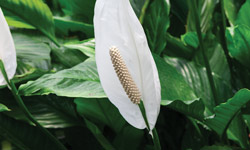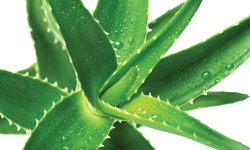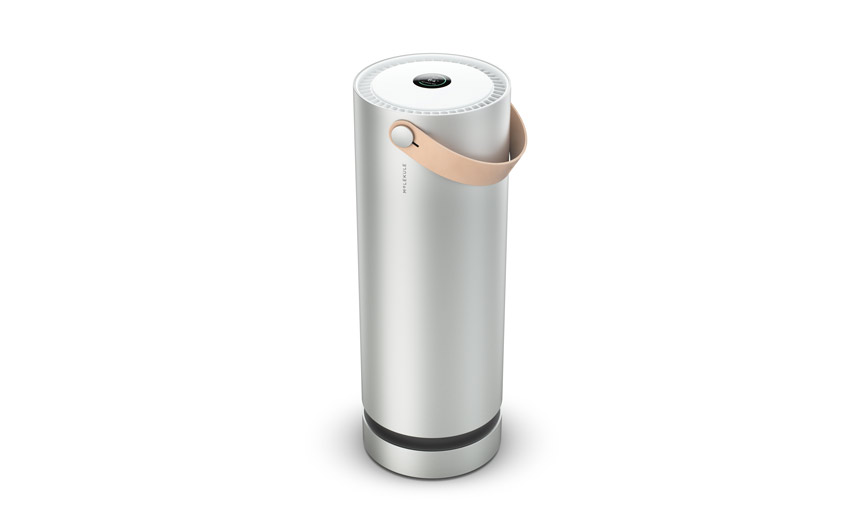Simple tips to reduce toxins in the air so that you can breathe better, and stay healthier at home.
These days, A quick look at the Air Quality Index might prompt you to call out of work, close your windows, and start Googling “How can I eliminate toxins?” While there’s little you can do to control the local air quality when you step outside, there are definitely a few key things you can do to make sure the air quality in your home is serving purity eleganza for your upcoming RuPaul’s Drag Race viewing party. Two easy steps you can take towards cleaning your home air are investing in a quality air purifier and picking up some new house plants.
Molekule (molekule.com), backed by the United States Environmental Protection Agency (EPA), is an excellent investment in detoxifying the air in your living space. Considered the world’s first “molecular air purifier,” Molekule’s patented technology brings a new approach to air purification — completely eliminating the full spectrum of indoor pollutants and breaking them down at a molecular level. “For over a decade, the EPA has recognized that indoor air is often five times – and in some cases even 100 times – more polluted than the air outside. Since people spend more than 80 percent of their time indoors, it is essential that they breathe healthy air in their homes,” according to April Richards, EPA SBIR Program Manager. “Molekule’s technology has the potential to offer an efficient method of purifying indoor air. EPA’s SBIR Program provided the initial funding for this project, and helps support the development and commercialization of technologies like these.”
The technology behind Molekule was developed from of over 20 years of research led by Dr. D. Yogi Goswami, a globally recognized expert in solar technology. In 1995, he sought to use his background in solar energy to find a way to relieve his son’s debilitating asthma symptoms. Think your air purifier with a built-in HEPA filter is enough? Many pollutants are smaller than 0.3 microns, which HEPA filters simply aren’t able to remove.
Find LGBTQ-Friendly Resources[wpp range=”all” cat=’16259′ thumbnail_width=75 thumbnail_height=50 limit=4 stats_views=0]
Once you’ve got your air purifier, it’s time to really go green and, as Voltaire would say, “cultivate your garden.” In 1989, NASA published its findings in the NASA Clean Air Study. It states, “If man is to move into closed environments on Earth or in space, he must take along nature’s life support system.” They examined certain chemicals abundant in indoor spaces. These chemicals, including benzene, trichloroethylene, formaldehyde (and others) are irritants, trigger allergies and asthma, and are proven to be cancer-causing after prolonged exposure. NASA proposed an expansive list of plant options to combat these chemicals. We’ve distilled those down to a simple list of five plants that will not only help you to breathe easier (and better), but just might impress friends and family at your next game night.
- Spider Plant: Haven’t had a houseplant before? Go with a spider plant. Formally chlorophytum comosum, these plants produce long, thin, arched foliage that can be solid green or green with hints of white. They were a favorite of the Victorian era, but that doesn’t mean you have to suffer like a Brontë Sister to maintain them. Spider plants like shady or partially sunny parts of the home. They’re hard-working air purifiers, removing both formaldehyde and xylene.
- Peace Lily: Peace lily plants are also easy to grow and maintain. These tropical evergreen plants shine in shady or partially sunny spots. Their pretty white flowers will typically bloom and open up in the summer, adding a subtle aroma to the air. They are known to remove pollutants like ammonia, benzene, formaldehyde and trichloroethylene from the air.
- Aloe Vera: Though you’d have a tough time getting through customs if you tried bringing an aloe vera plant home from vacation in Aruba, it’s easy to find one of more than 300 different species of this popular succulent. Long celebrated for their healing properties, Aloe barbadensis provides an extremely useful addition to your indoor garden. Aloe plant leaves are chock full of amino acids, enzymes, vitamins and other goodies useful in an anti-inflammatory or antibacterial capacity — or a quick way to help heal a wound. Indoor Aloe vera will thrive best when placed on a partly sunny windowsill where it can receive bright but indirect light.
- Mother-in-law’s tongue: Yes, you read that correctly, Mother-in-law’s tongue, or “Snake Plant,” is a recognizable house plant that is extremely easy to care for. This succulent responds to a variety of light conditions from bright light and full sun to a shady corner. However, something Mother-in-law’s tongue does not respond to is lots of water. Native to tropical parts of West Africa from Nigeria to the Congo, the plant is unique because it stores and releases oxygen only at night. The plant is known to remove benzene, formaldehyde, trichloroethylene, and xylene from the air.
- Bamboo Palm: Have a dark apartment? Adopt a bamboo palm plant, known by botanists as chamaedorea seifrizii. Bamboo palms are pet friendly and can grow up to 12 feet high, but they don’t require much attention. Be sure to plant yours in a pot that allows for well-drained soil. These plants are dramatic and add a bright flair to any room they inhabit. Their cousin Parlor palm also appreciate being nestled in a dimly lit corner. They’re known to remove benzene, formaldehyde, and trichloroethylene from the air.





Plants and purifiers aside, what else can you do? Perhaps the most simple thing is to doff your shoes as soon as you get home. You never know what you walked through out in that big bad world. You could be tracking in a variety of allergens, chemicals, pollen, dirt and whatever your neighbor’s dog left for you on the sidewalk. Do your best to leave it outside. Next, do a survey of what’s in your home. Are there aerosol cans or chemical air fresheners around? Throw them out and opt for greener alternatives. The EPA has information on their website about volatile organic compounds (VOCs) that are emitted as gases from solids or liquids and can have both short and long-term adverse health effects. Additionally it’s important to clean, and not just for aesthetics. Keep your floors and carpets free from dust and debris. Make sure there’s no mold or mildew on your ceilings and walls and do your best to ventilate and keep air moving throughout your home. Now take a deep breath and enjoy!
Want WorldPride content notifications? Sign up for email updates. Want to receive Metrosource LGBTQ content notifications? Sign up for MetroEspresso.
Spider plant stock photo credit posinote / Peace lily stock photo credit Vladimir Liverts / aloe vera stock photo credit Tatiana Peteliaeva / Mother-in-law’s tongue stock photo credit Kittikorn Phongok / bamboo palm stock photo credit elnradrf
Last modified: March 26, 2019














